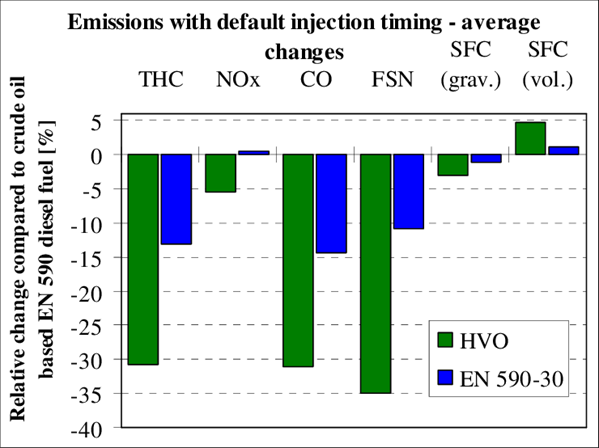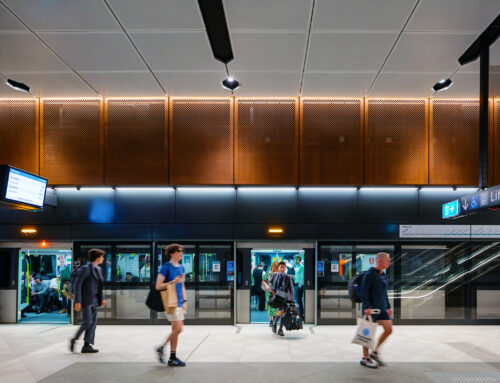Traditionally, the default emergency power supply has been a generator, powered by diesel. However, the energy market is becoming more sustainable and decision makers are increasingly considering how every business choice helps them on their journey towards net zero.
There’s no one size fits all solution for a secondary power supply. Approaches depend on the life safety and operational requirements of the building, as determined by both regional building codes and authorising property bodies.
Understand your business need
Reliability of power supply
The first step to deciding on the right emergency power supply starts with looking into the likelihood of the power supply failing in your location. In general, the power in city centres rarely goes down. The figures below represent the most recent published data at time of writing (July 2023).
- In Melbourne, the average annual downtime per customer totalled 13 minutes (2017).
- In Sydney, the average annual downtime per customer totalled 6.15 minutes (2022).
- In London, there have been no failures since 2003 (2022).
In remote, rural and regional locations, power generally goes down more often. This is because, if load is exceeded, power suppliers tend to take down the power of regional locations before the city centre to minimise economic losses. While this puts added pressure on rural business centres, it has considerably less financial impact than the city centre alternative.
Backup need
It’s also important to understand what you need backup for. The number of people in offices, for example, has reduced significantly post-COVID with IT networks almost universally running remotely. This can reduce the impact of business losses should power go down.
On the other hand, hospitals, financial institutions and food manufacturers have a critical need for emergency power supply. Also, businesses with a high security risk may need to ensure customer, business or government data isn’t compromised with an outage.
Some businesses run a backup generator that far exceeds their backup need. Often, we can reduce the need for an emergency supply and question whether it’s needed at all.
Building classification
Not all buildings need to prepare for the same amount of operational continuity. National property councils set out guidelines for the grades which determine the level of emergency backup required.
Building classification snapshot
| Grade | Life safety | Operational continuity |
|---|---|---|
| Premium
(Healthcare, trading, banking, communications, data centres) |
3 hours minimum (dependent on fire strategy) |
12 to 24 hours
(dependent on operational needs) |
| A Grade
(Standard commercial office) |
3 hours minimum (dependent on fire strategy) |
8 to 12 hours
(dependent on operational needs) |
| Life science buildings |
3 hours minimum (dependent on fire strategy) |
Up to 72 hours
(dependent on operational needs) |
Life safety power supply
The purpose of life safety is to provide safe egress throughout the building to the safest point of exit in the event of a fire or mains power failure. This includes evacuation, lifts, fire detection, sprinkler systems, smoke extraction, ventilation, alarms and emergency lighting. Ensuring these services continue to function ensures that an occupant’s life isn’t put at risk.
Operational continuity
Operational continuity ensures uninterrupted power supply to critical operations and equipment in the event of a fire or mains power failure. This can include data centre and communications networks, manufacturing processes, healthcare infrastructure and financial operations.
Building regulations and codes
It’s important to consider both life safety and fire brigade requirements when looking into building regulations and codes. These will depend on your building type, energy type, fire strategy, regional requirements and local fire authority.
Insurance implications
Every type of building, energy supply and region has different definitions of risk and insurance requirements. (Much of this comes does to a combination of the facility’s fire risk strategy and the reliability of the energy supply.)We recommend individual conversations with your local contact and insurer to determine cover and premiums for your building.
Financial budget versus carbon credit
Some emergency power supplies have a high cost for installation, low running costs and low emissions, for example a battery powered by photo voltaic panels or dual power supply (regional rates pending). On the other hand, a generator powered by diesel will have a lower up-front cost but relatively high costs to run and maintain and emit considerable CO2.
It’s important to look at your financial budget and carbon allowance, as set out by your own sustainability targets or environmental and social governance plan, to determine how much you’re willing to pay to secure a green power supply. usinesses should work closely with their sustainability teams, or an independent consultant, to define this carbon allowance.
Emergency power supply options
Generators
The majority of the emergency power supply globally is provided by generators. When maintained and specified correctly, generators are a very reliable option. They aren’t, however, perfect.
- They need a lot of space. The generator will also need an acoustic casing and the size of this increases with increased acoustic sensitivity. The generator needs to be accessed from all sides and the space where it’s housed also needs to accommodate exhaust systems.
- They’re noisy. Untreated generator noise levels can reach 100 dB(A). This is equivalent to the noise heard on the ground of a jet plane flying at 300 m.[1]
- The most affordable and available fuel for generators is still diesel, a fossil fuel. The greater the length of time needed for a secondary power supply, the larger the fuel store and need.
- For an hour of power, the CO2 emitted is equivalent to driving a standard car for 4,500 miles or 7,250 km. That’s 40 per cent of its annual mileage.
(Diesel releases 2.7 kg of CO2 per litre. So, for a 1 MVA diesel generator which goes through around 210 litres per hour, it would release 567 kg of CO2 per hour.)
Generators powered by an alternative fuel
Hydrotreated vegetable oil (HVO)
Today’s generators are compatible with HVO fuel. This is a good option when an alternative approach to emergency power supply isn’t feasible.
HVO is a fuel derived from 100 per cent renewable waste streams and can reduce greenhouse gas CO2 emissions by up to 90 per cent over regular diesel. The below graphs show the improvement in THC (total hydrocarbon emission), NOx (nitrogen oxide emission), CO (carbon monoxide emission) and FSN (filter smoke number) over a small increase in SFC (specific fuel consumption) by volume.[2]

HVO can also be blended with diesel, creating a hybrid fuel, if supply is short. Unfortunately, the availability of HVO is still very limited. This supply is forecast to increase over the next 5 years.
Generator powered by a battery
While battery-powered generators may sound great, it’s important to understand the whole picture. Given the considerable investment in a battery system, for it to be sustainable, the battery charging would need to be powered by renewable energy and you would use it each day. The energy store would also need to be suitably sized in case the power outage falls at a time after you have just used it. And that energy store goes hand-in-hand with a higher carbon outlay.
If an organisation was to create this renewable energy through self-generated solar, a large business or hospital would need an enormous amount of photo voltaic (PV) panels to charge the considerable battery load. An average-sized hospital, for example, would need around 25,000 m², an area equivalent to several football fields. The building would also need a significant amount of space to store the batteries. As with other forms of energy supply, the longer you want your back up to be, the bigger the batteries will be.
An alternative to installing PV would be to buy renewable energy from the grid to power the battery system.
Another important consideration is that batteries still have a relatively short lifespan. After 5 years their charge capacity decreases to approximately 75 per cent.
Dual power supply
When a building has a reliable primary power supply and access to an independent secondary power supply, its emergency power supply can be provided by the grid. This is done through a dual transformer arrangement which transfers over power very quickly – between 5 and 30 millseconds.
This is a very practical solution for city centre locations where power outages are rare. Many businesses already have an additional (or dual) power supply in their building but aren’t aware of it.
Although this solution isn’t classified as ‘life safety’ by UK Power Networks (UKPN), the likelihood of power going down is so rare that it’s an excellent solution. Capacity charges for a secondary power supply vary, depending on the region.
We developed a secondary power supply through a dual transformer arrangement for 150 Aldersgate Street in London.
Our design was coordinated with the UK Power Networks (UKPN) so they could connect 2 incoming 11kV supplies into a new UKPN intake room. The cabling was then connected via new 11kV cabling to 2 ring main units to supply the new electrical services infrastructure.
These 2 high voltage (HV) supplies come from separate HV rings. One ring supports the normal supply and the second ring supports a backup supply.
This arrangement allows for the removal of the life safety generator from site completely. A comprehensive fire safety strategy supports this energy solution.
Emergency power supply snapshot
A secondary power supply which covers life safety and essential landlord services:
| Column 1 | Option 1: Diesel generator | Option 2: Renewable energy generator (HVO) | Option 3: UPS battery powered by renewable fuel source | Option 4: Dual power supply from a grid powered by renewables |
|---|---|---|---|---|
| Hours of backup | 24 hours | 24 hours | 0.5 to 4 hours | No limit |
| Financial cost to set up | $ | $ | $$$ | $ to $$$ (dependant on proximity of nearest secondary supply network to building) |
| Financial cost to operate & maintain | $$ | $ (Dependant on fuel availability) | $$ (maintenance and replacement, 7-10 years) | $ (dependant on rates charged in your region) |
| Whole-of-life carbon cost | $$$ | $$ | $$ | $ (renewable tariffs) |
$ – low cost, $$ – moderate cost, $$$ – high cost
Don’t skimp on maintenance
In our experience, all insurers demand regular checks and maintenance of generators and batteries.
Generator maintenance
Generators should be inspected and started every week to make sure they run okay. They should be left to run for around 30 minutes on a greater than 30% load. A full load test should also be carried out every 12 months. This test needs to run for approximately 3 hours.
We were called out to an NHS hospital site as they had lost power to the operating theatres. The backup generators didn’t kick in leaving only the uninterrupted power supply (UPS) support in the theatres.
At first, it was assumed to be an issue with the generator. The generator looked almost brand new at 5 years old. Following a diagnostic review, we determined that the generator and switchboard hadn’t ever been commissioned. This had damaged the generator, but that was only one part of the issue. The phase failure relay, which signals the generator to start, had seized shut.
The result was that a 5-year-old generator and phase failure relay had to be replaced. Both of these issues could have been identified during planned maintenance and saved the hospital £300,000 (AU$580,000).
Battery maintenance
A UPS battery can automatically test itself on a regular basis. For buildings with manual testing, batteries should be tested every 12 months with a full battery replacement, approximately, every 5 years.
If the energy store is powered by PV, the panels should be kept clean and inspected regularly for damage.
Dual power supply maintenance
Dual power supplies should be tested annually with a changeover of power to the secondary supply. This makes sure that if the primary supply is lost, the transformer will switch power supply. This transfer of power needs to be monitored to make sure there are no issues with the load.
Ensuring a resilient and sustainable future
There’s discussion around the future reliability of the network when multiple renewable providers make up the grid. The number of these providers is growing every day. As with all innovations and emerging technology, we’re journeying into unknown territory – it’s an exciting time.
| Country | Percentage of grid from renewable sources on 11 June 2023 |
|---|---|
| United Kingdom | 51% |
| Australia | 44% |
| New Zealand | 86% |
| Canada | 29% |
| USA | 14%[3] |
What we do know, however, is that we have a duty of care – and a duty of engineering – to reduce our carbon emissions. One effective way to do this is by considering power supply.
There are certainly more opportunities for organisations located in a city centre surrounded by a resilient and available energy network. This opens up the possibility of a dual power supply, often taking away the need for a generator or battery and significantly improving carbon credentials.
For rural locations, on the other hand, our conversations lean towards a generator as a preferred option, ideally powered by HVO. This offers, for now, the most sustainable and resilient secondary energy supply.
For any solution, it’s critical to consult with a team of electrical specialists who put sustainability first. This will give you the best chance of a futureproofed emergency backup.










